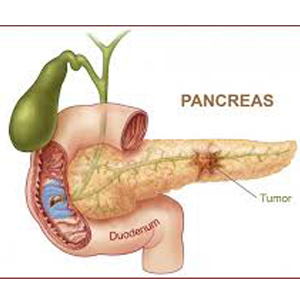Group of four screening distinctiveness offers more dependable recognition of Pancreatic Cancer

There is a new and accurate laboratory method that researchers from the University of Missouri have found in order to diagnose pancreatic cancer which is the fourth leading reason of cancer deaths in the United States. This is a fatal disease and it causes deaths that are more than 38,000 every year in the United States, and it was also determined that 94% of patients with pancreatic cancer die within a span of 5 years.
"It is very tough to find out and diagnose Pancreatic cancer because of slight differences that differentiate it between a healthy tissue, a cancerous tissue and a tissue that is out of the usual features of tissue, or suspicious," said Lester Layfield, MD, professor and chair of the MU School of Medicine's Department of Pathology and Anatomical Sciences. He also mentioned that " the goal of the research was to find a method to make a more exact and reproducible analysis."
No normal testing ways can be used like mammography for breast cancer due to the location of the pancreas within the body. By the help of a minimal insidious method called endoscopic ultrasound-guided fine-needle aspiration a biopsy is taken of the pancreatic tissue when a physician suspects that a patient may have pancreatic cancer. "Conventionally, pathologists have tested a sample of a tissue by using a microscope and made an analysis on the basis of the overall features of all the cells that are present in the tissue sample," Layfield said. “According to the previous research it was shown that an experienced pathologist is able to diagnose pancreatic cancer with precision in the mid-to-upper 80 percent range by making use of current techniques. However, we thought of creating a perfect way by determining the cellular features that are most closely connected with cancer."
In order to develop the new investigative method, MU researchers performed a demonstrative study of the records of 57 patients at University of Missouri Health Care who had pancreatic cancer. They examined 16 features of pancreatic biopsies which might be tested under a microscope and performed a numerical examination to find which may be most dependable identified by many pathologists and which of them were more closely connected with pancreatic cancer.
"With the analysis conducted, we developed a group of four characteristics which lets a pathologist to make a diagnosis of pancreatic cancer with 93 percent accuracy which is a considerable improvement than the traditional method," Layfield said. "I feel that by the new method of diagnosis pathologists may improve the diagnosis of pancreatic cancer, which in turn improves care for patients by offering an evidence-based method to diagnose the disease and determine the best treatment."
The four features that the researchers identified of pancreatic cancer are:
- A broad dissimilarity in the size of pancreatic cells' nuclei, called anisonucleosis
- Extra-large nucleoli, called macro nucleoli
- Single unusual epithelia cells, cells that are found in the pancreas
- Mucinous metaplasia, which is the creation of mucin in cells that usually don't create the substance








